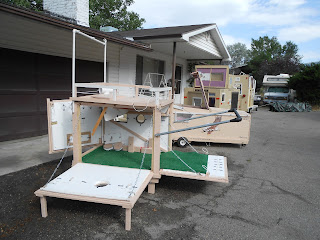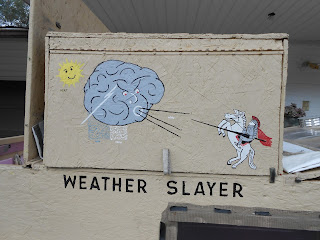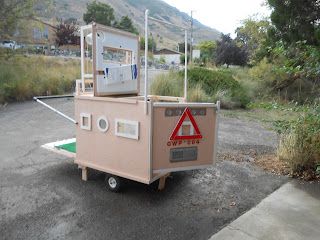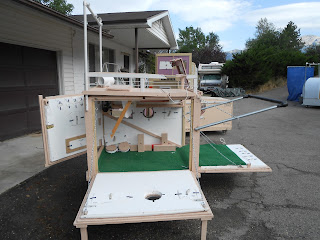See a short YOUTUBE video of the shelters here.
Or scroll below, or click on the links to the right, to see more examples of the shelters and how to build them. It's relatively easy and inexpensive. You can customize yours to your own liking ... your very own roller pod. You can do it! And let me know if I can help!
-- Gary Pickering, (801) 785-2900, pickeringgw@gmail.com.
Media coverage we've received
In late July 2013, KSL TV came to my house and did a story on me and my Dignity Roller Pods:By Sam Penrod, July 30, 2013
Yahoo! Shine: "Formerly Homeless Man Invents Portable Shelters to Help Others"
By Beth Greenfield, Shine Staff | Healthy Living, Friday, August 2, 2013
The Huffington Post: "Gary Pickering, Formerly Homeless Man, Builds Portable Shelters For People Living On The Street In Utah"
By Nader Salass, August 1, 2013
Why The Need?
In a letter to the editor posted in the Daily Herald in December 2012, we're reminded that local regulations usually do not allow church groups to set up temporary "warming" shelters to help the homeless. Hence the need for alternative, temporary housing solutions such as these roller pods. See more reasons in the "Other Resources - and Reasons to Build Them" link to the right.
-- Gary
By Nader Salass, August 1, 2013
Why The Need?
In a letter to the editor posted in the Daily Herald in December 2012, we're reminded that local regulations usually do not allow church groups to set up temporary "warming" shelters to help the homeless. Hence the need for alternative, temporary housing solutions such as these roller pods. See more reasons in the "Other Resources - and Reasons to Build Them" link to the right.
-- Gary

























































